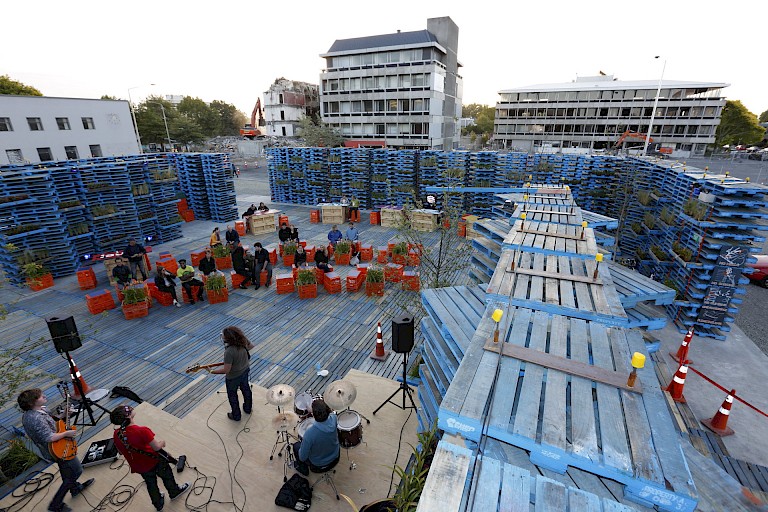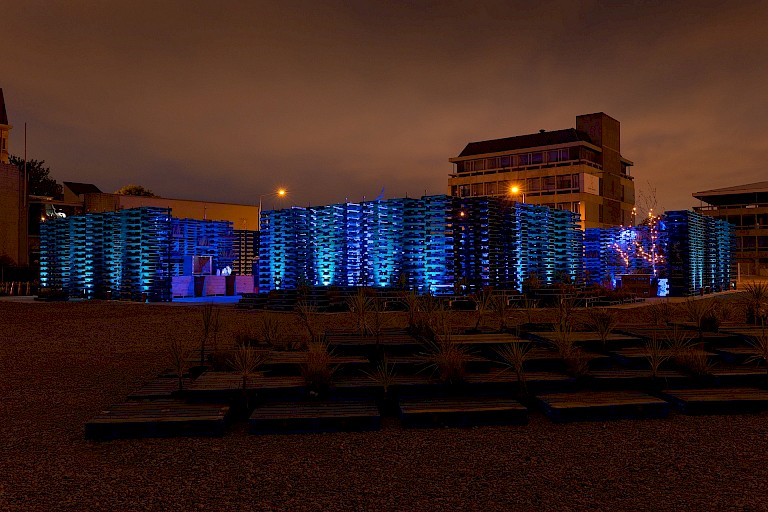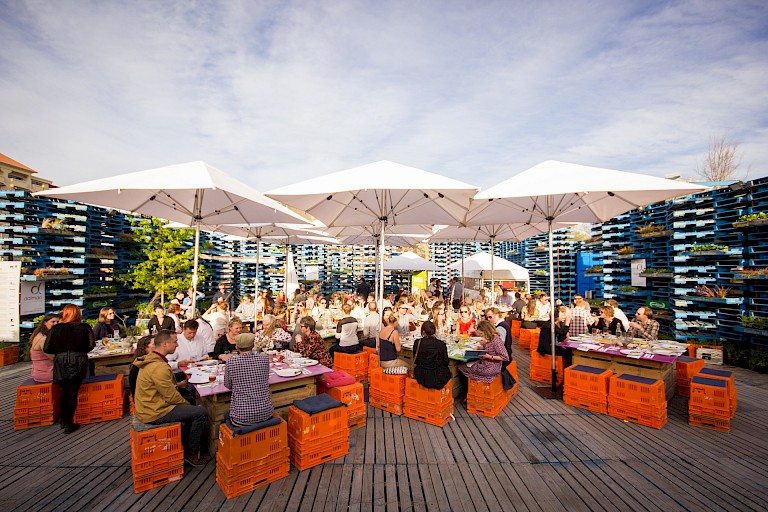



In just six and a half months, Gap Filler successfully coordinated and engaged multiple key personnel, volunteers, skilled laborers, city representatives, community partners, sponsors, vendors, and audiences in the making and programming of a community venue and gathering place. In May 2013, Gap Filler launched a crowd-funding campaign to extend the life of the Pallet Pavilion. They successfully raised NZ$82,000 to cover the pavilion’s operational costs for an additional year. In April 2014, the pavilion was deconstructed. The site continues to be known as “The Commons” and is now home to a handful of post-quake organizations including Life in Vacant Spaces (LiVS), Volunteer Army Foundation (VAF), The Arcades Project, and a series of ten laminated timber archways developed by FESTA (the Festival of Transitional Architecture). The site continues to support transitional projects through an agreement between Christchurch City Council and (LiVS), and is even governed by an evolving set of aspirations for the site.
As social practice continues to evolve in contemporary public art practice, it is perhaps necessary to begin to evaluate projects initiated by multidisciplinary and interdisciplinary collectives that emerge to respond to unique situations involving urban rehabilitation and regeneration initiatives. In this context, Pallet Pavilion may be understood as an example of a temporary, community-based, socially engaged public art installation. The project transformed a prominent city center site devastated by the earthquakes into a much-needed gathering space to welcome residents, city workers, and businesses back into the urban center. Their collective team skills and experience allowed them to successfully fuse art, design, education and outreach programming together to bring back and nurture community participation, collective and individual creative expression, and dialogue in a city devastated by the earthquakes.
All copyright belongs to Shanghai Academy of Fine Arts, Shanghai University.



